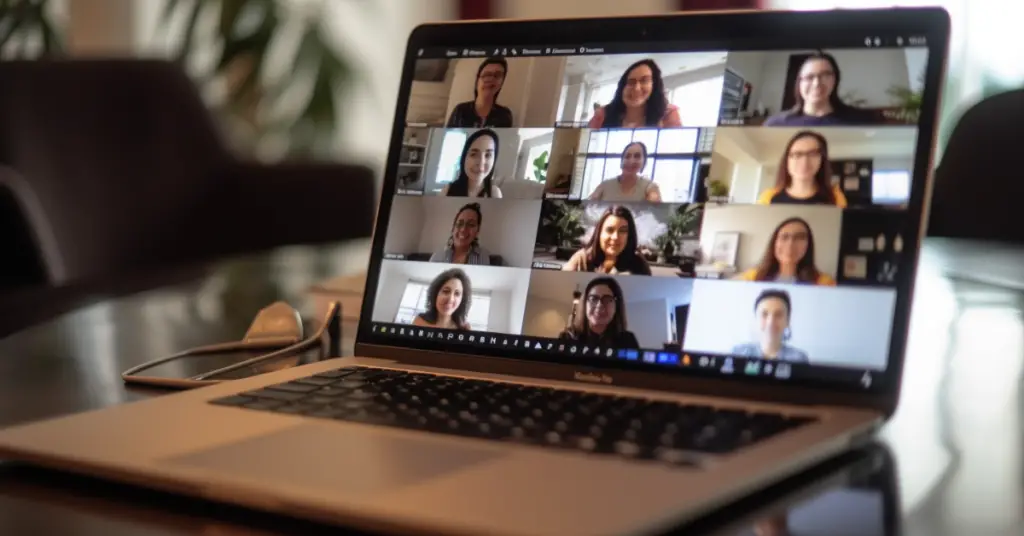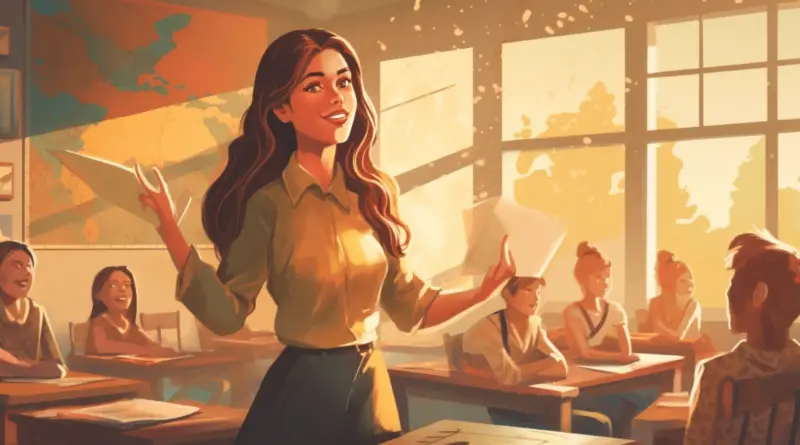ChatGPT is Changing Education as We Know It, Here’s How!
When hand-held calculators became accessible to the general public in the 1970s, it eased not just the work of physicists and engineers but students. Teachers were likewise challenged to give students real-world math problems. ChatGPT is to words what calculators have become for numbers and the pushback is no different. However, it is here to stay and is certainly changing education as we know it.
ChatGPT can successfully free up teachers’ time by automating tasks like lesson planning, curriculum development, and grading. It can also provide personalized feedback on each student’s work. For students that need more time to grasp concepts, ChatGPT can repeat explanations at their pace without delaying the rest of the class.
Want to know more about how teachers and students alike are using this revolutionary technology? Read on as I have more to share about what this chatbot means for the future of education.
Beneficial Use Cases of ChatGPT for Education

There has been a lot of pushback against the use of ChatGPT by students, such that it has even been considered cheating by educators and students alike.
However, ChatGPT can be used in various beneficial ways in education. Some uses include:
Tutoring and Homework Assistance
ChatGPT can act as a virtual tutor, providing personalized assistance to students. It can answer questions, explain concepts, and help with homework assignments.
Students can use ChatGPT to get feedback on their writing assignments. It can also provide suggestions for improving grammar, structure, and content.
Language Learning
ChatGPT can engage in conversations with students, helping them practice and improve their language skills. It can simulate real-life conversations and provide instant feedback.
Critical Thinking Exercises
By engaging in discussions with ChatGPT, students can enhance their critical thinking skills. They can debate different perspectives, analyze arguments, and evaluate evidence.
Learning Support
ChatGPT can be beneficial for students with disabilities or learning difficulties. It can provide alternative ways of learning, adapt to individual needs, and offer a more inclusive educational experience.
ChatGPT can present information as text or speech, allowing students to choose the mode that suits them best. This flexibility helps students with visual impairments, dyslexia, or other reading difficulties to engage with the content more effectively.
Also, some students with disabilities or learning difficulties may feel more comfortable interacting with ChatGPT compared to face-to-face interactions with teachers or peers. This can help alleviate social anxiety and create a safe learning environment.
In addition, while ChatGPT has been criticized for needless repetition, this can come in handy for students that need to have explanations repeated or rephrased for them to understand the material.
24/7 Availability
ChatGPT is accessible at any time, providing students with round-the-clock support. This accessibility can be particularly helpful for students who may require additional assistance outside regular school hours or those who prefer to learn at their own pace.
Virtual Classroom Assistance
ChatGPT can assist teachers in managing virtual classrooms. It can answer common student queries, provide reminders, and help with administrative tasks. The Chatbot can also assist teachers by developing engaging lesson plans or fine-tuning them and even generating practice questions.
ChatGPT is certainly invaluable to both teachers and students and is changing education as we know it.
Ultimately, the objective of education is to help students learn. The AI tool can be a valuable tool in achieving this goal, however, it should not be used to replace the human interaction and guidance that is essential for learning.
It should instead be used as a supplement to human teaching and support.
Negative Impacts of ChatGPT On Learning
While ChatGPT does play a role in improving the learning process, it is important to be aware of the potential negative impacts of ChatGPT’s use on learning. These include:
Inaccurate or Misleading Information
ChatGPT generates responses based on patterns it has learned from the training data, which may include incorrect or biased information. This can lead to learners receiving inaccurate or misleading answers, which can hinder their learning process.
Lack of Critical Thinking
Learners may become overly reliant on ChatGPT for answers without critically evaluating the information provided. This can discourage independent thinking and hinder the development of critical thinking skills.
Limited Context Understanding
ChatGPT may struggle to understand the context, nuances, and complexities of certain topics. Consequently, it may provide simplistic or incomplete explanations that do not fully address the user’s learning needs.
Reinforcement of Existing Biases
If the training data contains biased or discriminatory content, ChatGPT may inadvertently reinforce those biases in its responses. For instance, when asked for a list of philosophers, ChatGPT failed to mention any female or non-white philosophers.
Such biases can perpetuate harmful stereotypes and hinder inclusive and unbiased learning experiences.
Reduced Interpersonal Communication Skills
As users increasingly rely on ChatGPT for information and interaction, they may have fewer opportunities to engage in face-to-face or real-time conversations.
This can negatively impact their interpersonal communication skills, such as active listening and effective verbal communication.
Reduced Motivation For Deeper Learning
ChatGPT provides quick and easy answers, which may discourage users from engaging in deeper learning or conducting their own research. This can result in a shallow understanding of the subject matter and hinder the development of critical thinking and problem-solving skills.
Thus, while there are merits in using ChatGPT as a learning tool, educators should supplement it with other reliable sources, and encourage critical thinking and independent research to mitigate these negative effects.
Students should certainly be encouraged to be critical of the information ChatGPT provides instead of simply accepting the information ChatGPT provides at face value. Its output should be critically analyzed and fact-checked using research resources.
Also, another way to mitigate the pitfalls of overly relying on ChatGPT is for educators and guardians to provide an atmosphere where students or wards can be open with them when unsure about the information ChatGPT provides.
Teachers’ Responses to the Use of ChatGPT in Education
The use of ChatGPT in education is largely two-sided: by the teachers as an assistive tool for tasks that can be automated and by students as an aid in generating coursework.
Educators have responded in a variety of ways to the many possibilities of ChatGPT use in education. Some remain skeptical, which is expected given that it is a new technology. However, their skepticism is also due to the unreliability of some of the facts that the AI generates.
Nevertheless, the skepticism is dwindling and an increasing number of teachers are welcoming ChatGPT into the classroom. As of April 2023, an estimated 98% of teachers across all educational levels used it to automate tasks such as grading, providing feedback, and writing emails.
A Chicago middle school teacher, Matthew Bates, shared how he has used ChatGPT to grade essays, offer positive and negative feedback on students’ assignments, and create and grade multiple-choice tests.
He also used the chatbot to write lesson plans and create quizzes and tests to test students’ understanding of new literature texts.
Also, Alice Keeler, a Kansas math teacher, actively uses ChatGPT as a teaching assistant. She encourages the incorporation of ChatGPT into the classroom by teachers to “foster creativity, critical thinking, student-centered learning, and project-based learning experiences that lead to a deeper understanding of subject matter.”
How Do Teachers Deal With Students Using ChatGPT?
It is important to note that schools and districts that are yet to issue uniform guidance on how to treat students’ use of ChatGPT are in the majority. It is still a relatively new technology and educators and school boards are still figuring out the right collective response.
Responses thus vary across schools and individual teachers. Many teachers believe that it could impede the learning process and constitutes cheating in the absence of attribution since student output when aided by ChatGPT will not be reflective of whether learning outcomes were achieved.
Several schools and educational districts have even banned its use. Though this ban has now been lifted, New York City’s education department initially banned ChatGPT use on its school devices and networks. Public schools in the Los Angeles Unified School District and Australia still have it banned.
However, many teachers are on the other side of the divide, advocating for ethical use instead of a total ban. Keeler is one such teacher.
She recently published a guide on helping students understand the line between using ChatGPT as a supportive tool and using it to cheat. She also advocates a re-evaluation of what constitutes academic dishonesty and the development of guidelines that promote responsible use.
What Does ChatGPT Mean for the Future of Education?
Needless to say, ChatGPT is changing education as we know it and is a powerful tool that has the potential to revolutionize the way we teach and learn.
As ChatGPT continues to develop, it is likely to have an even greater impact on education. For instance, academic dishonesty may need to be redefined, having in mind resources like ChatGPT.
By carefully considering how ChatGPT can be used, educators can ensure that it is used in a way that benefits students and enhances the learning experience.
Related Articles
Can Teachers Tell if You Use ChatGPT? [Students, Take Note]
Does ChatGPT Give the Same Answer to Everyone?




